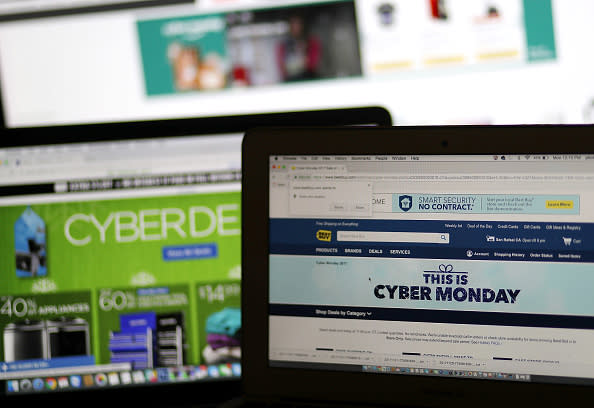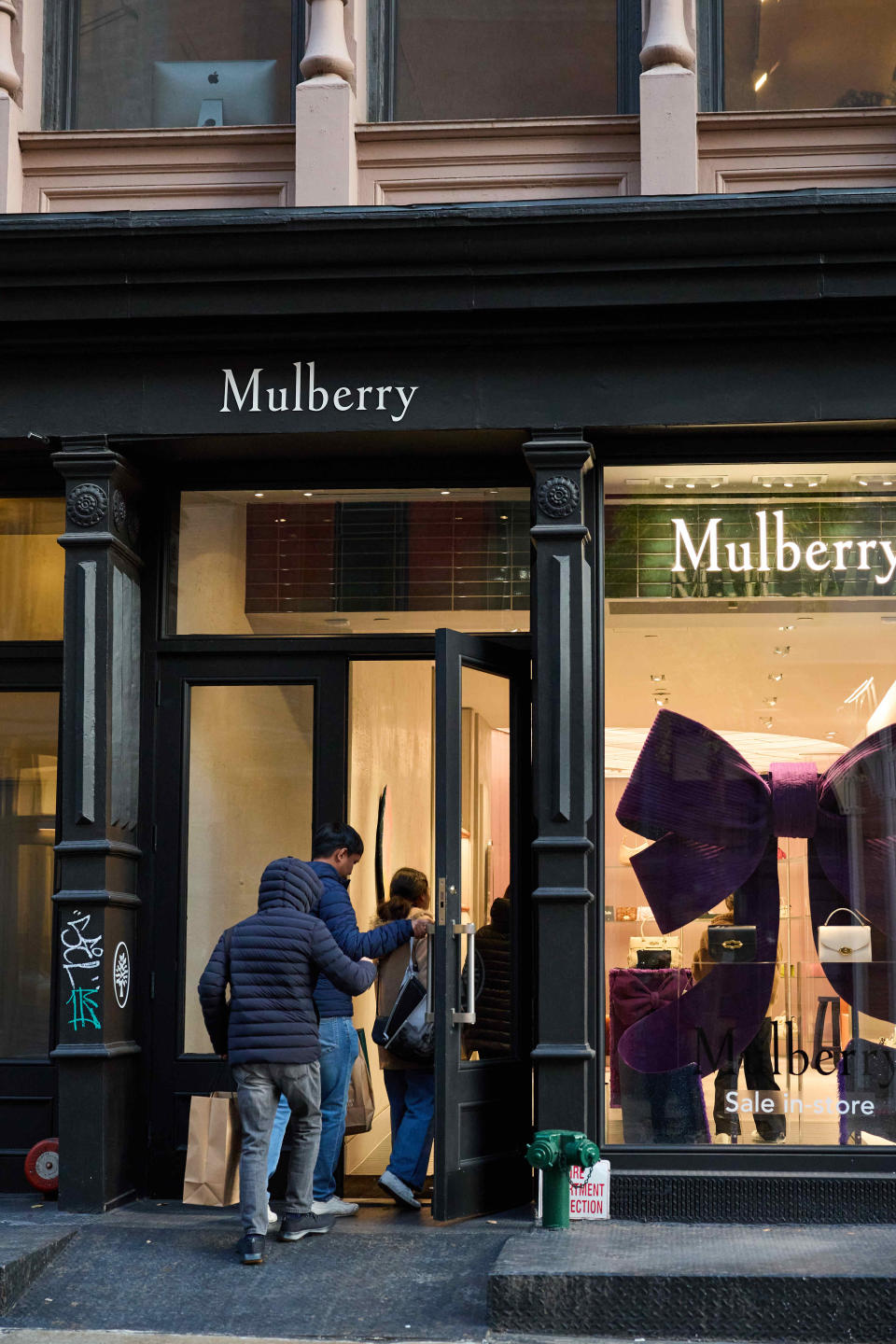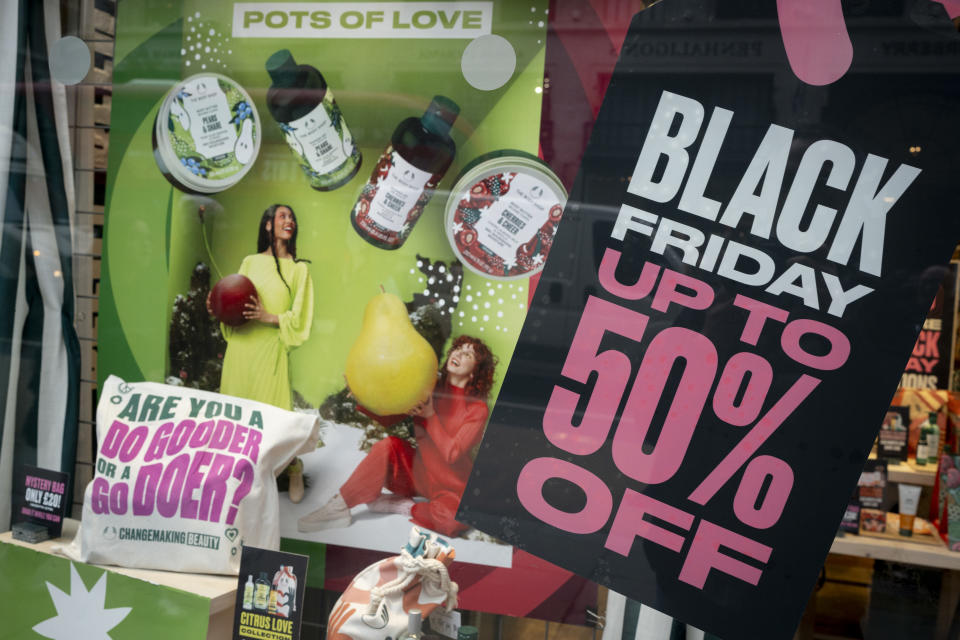Cyber Monday Out-clicking Black Friday

After a big surge on Black Friday and through Thanksgiving Weekend, online spending is not about to let up.
Software giant Adobe forecast consumers would spend between $12 billion and $12.4 billion on Cyber Monday, making it the biggest online shopping day of all time, and exceeding Adobe’s own initial forecast of $12 billion.
More from WWD
Shopify, which powers the e-commerce sites of retailers and brands, reported that its merchants sold $4.1 billion worth of merchandise on Black Friday, but expected bigger volumes on Cyber Monday. “Our Holiday Pulse Survey shows that more people plan to shop on Monday than Black Friday,” Shopify president Harley Finkelstein, said in a statement.
RELATED: Despite Successful Black Friday Weekend, Retailers Remain Cautious on Holiday
He added that 61 percent of holiday shoppers surveyed said they were at least somewhat likely to shop on Cyber Monday, while only 41 percent said the same about Black Friday.
The survey was conducted Oct. 4 to 16, with a random sample of 1,771 U.S. adults, aged 18 and older, who planned to buy holiday gifts this year and are members of Gallup’s probability-based, nationally representative panel.
“With strong Black Friday online sales performance in the books, we anticipate another peak day with high-single-digit growth globally and in the U.S. on Cyber Monday,” said Rob Garf, vice president and general manager at Salesforce, a software firm specializing in sales data and tracking customer interactions to help businesses. “As Black Friday and Cyber Monday battle it out for the largest online shopping day, one thing is for sure, consumer spending remains resilient as they diligently search for and buy attractive deals.”
Garf said that Black Friday online sales “exceeded any retail executive’s expectations. Retailers stepped up their discounting game and shoppers, in turn, clicked the buy button. Consumers who have been playing discount chicken should consider clicking the buy button now as retailers have decreased inventory levels to preserve capital and increase margins.”

“Cyber Monday is a huge day. We’re seeing the deals coming out really big and really early today and we’re going to continue to see that,” added David Bassuk, global leader of the retail practice at AlixPartners. “The challenge with all of this is that online selling is continually degrading profits and so, this is a huge day and everyone needs to capitalize on it and consumers really win today, but retailers are challenged on days like this when everything is leaning to online.”
It’s a dynamic that has merchants both chasing the clicks — and trying to drive shoppers to brick-and-mortar stores. As Bassuk sees it, Cyber Monday is about “getting early sales, getting early wins for retailers, but it absolutely is about getting customers into the stores.” He said that if Cyber Monday turns out to be strong, it might give retailers a little more confidence to clear goods online and hold off a little longer on broader price promotions.
While consumers are showing a strong appetite to shop online, many are giving themselves more flexibility with their budgets.”
Adobe
Consumers on Monday got bombarded by emails and texts on new price promotions, with Gap offering 50 percent off everything and 60 percent off on select products. Saks offered $50 off every $200 spent and flash sales at up to 75 percent off certain designer styles. J.Crew offered cyber deals starting at $19.50 and 50 percent off site-wide with some exclusions. Kate Spade Outlets advertised its “best deals of the season,” and “one-click wonders,” and up to 70 percent off plus an extra 25 percent off.
According to retail experts tracking holiday sales, most of the promotions so far are pre-planned and inventories remain in control. But after Cyber Monday, a deep lull in shopping is expected, lasting until about 10 days before Christmas. So bigger deals should emerge through the lull period and into the final days before Christmas.
Another surge in online shopping is expected closer to the deadlines for orders to be received before Christmas. Those deadlines are generally around Dec. 21, though there is variation among retailers. Walmart and Nordstrom are offering speedier deliveries, within two days, giving consumers some extra time to shop. Walmart this season came out with a new menu of same-day, next-day and two-day shipping options, and has been adding parcel stations to its hubs and utilizing its private fleet of trucks to move goods faster to homes.
A Nordstrom spokesperson said in an email, “Our free, two-day shipping has expanded beyond our loyalty customers. For a limited time, Nordstrom is offering free, two-day shipping on thousands of items in more than 20 markets. Customers can enter their shipping ZIP code on N\nordstrom.com to see what ships fast, exclusions apply.”
“Because Thanksgiving was pulled forward to Nov. 23 means retailers will have a December lull that actually starts in November on Tuesday the 28th [the day after Cyber Monday] and extends right into the second week of December. It will be a deep lull, really taking what had been a perfectly decent Black Friday weekend to the overall season slowing as December unfolds,” observed Craig Johnson, president of Customer Growth Partners.

Adobe reported that Cyber Monday caps off a week of online deals known as Cyber Week, and that Black Friday came in above projections at $9.8 billion, up 7.5 percent year-over-year while Thanksgiving drove $5.6 billion in online sales, up 5.5 percent, year-over-year.
The software firm expects hot sellers on Cyber Monday to include Barbie dolls and toys, Lego, puzzles and card games, Nintendo Switch, Spiderman 2 (video game), headphones and smartwatches.
“While consumers are showing a strong appetite to shop online, many are giving themselves more flexibility with their budgets,” Adobe reported. “Buy now pay later is expected to see usage hit an all-time high on Cyber Monday, contributing $782 million in online spend, up a significant 18.8 percent year-over-year. So far this season [Nov. 1 to Nov. 26], BNPL has driven $7.3 billion, at 14 percent growth, year-over-year.”
Adobe’s statistics and projections are obtained through its Digital Price Index, which tracks online prices across 18 product categories. While prices still remain high, according to Adobe, e-commerce prices have fallen for more than a year and are down 6 percent, year-over-year as of last October.
On Monday afternoon, Salesforce released some preliminary Cyber Monday statistics indicating:
Top-selling countries: U.S., U.K., Australia
Top-selling cities: Los Angeles, New York, London
Average cart price: $106.86
Top five product categories by orders: apparel and accessories; health and beauty; home and garden; food and beverage; arts and entertainment
Desktop versus mobile sales: 76 percent mobile, 24 percent desktop
Salesforce said online sales on Black Friday reached $16.4 billion in the U.S. and $70.9 billion globally year-over-year. Salesforce said deals early in the season were “lackluster” but evolved into “a steady drumbeat of heavier discounts” enticing consumers to buy on Black Friday.
To keep the spending momentum going, and the deals top of mind, the Tuesday after Cyber Monday has become known as “Travel Tuesday” when discounts on airfares, hotels, cruises and vacation packages are offered on many websites. According to a survey by RetailMeKnot, 68 percent of U.S. consumers are planning to purchase holiday travel, compared to 55 percent in 2022.

Atefeh Yazdanparast, associate professor in Clark University’s School of Management and an expert on the social psychology of consumer decisions, said people are growing more comfortable shopping online.
“We have actually more expert shoppers now,” Yazdanparast said. “Ever since the recession consumers have actually started to brag about the deal that they found. It’s not prestigious to say, ‘I bought something expensive.’”
But that doesn’t mean that consumers are always so analytical and clear-headed.
“We know that as consumers, we make irrational, emotional decisions,” Yazdanparast said. “One factor that might actually not work in favor of consumers is shopping momentum.”
That’s when a purchase gives a shopper a psychological boost that then makes them more likely to make another purchase and perhaps another.
“That is not good in terms of consumers with a firm budget,” Yazdanparast said.
Shoppers are also subject to all the hubbub around big shopping days like Cyber Monday and can worry about missing out.
“Sometimes when the consumer does not even have a shopping list and they don’t really know what they need, they just start browsing,” Yazdanparast said.
And that is just what retailers are going for.
Best of WWD


